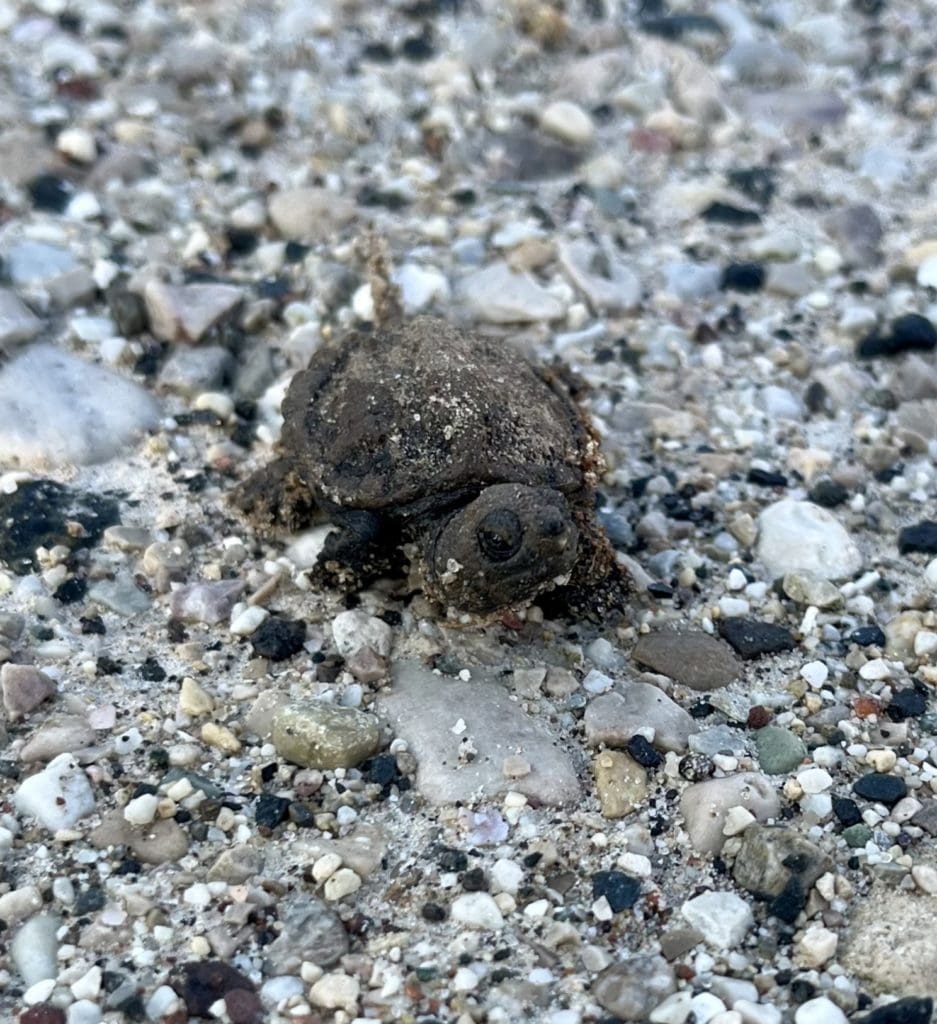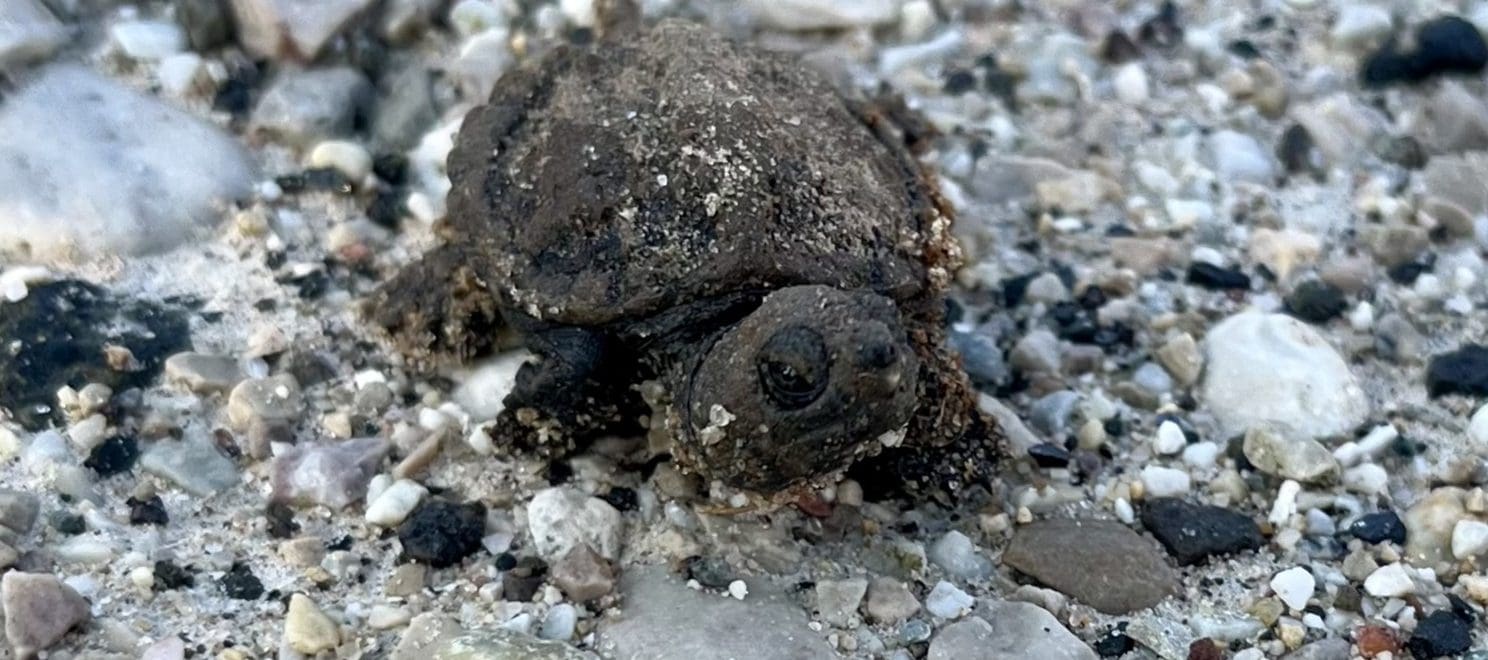By Jess Johnsrud, education coordinator

It was a Monday morning and I noticed some of the staff were staring at the ground near the Nature Center. I approached to see what was going on and they excitedly told me that they saw a couple of freshly hatched snapping turtles! The hatchlings were walking across the gravel towards the direction of the pond. Upon further inspection, we located where they were emerging from and then placed safety cones around the area so others would not drive near the nest.
Snapping turtles are the largest and heaviest turtles in Wisconsin with some adults weighing 50 pounds or more. They spend most of their time in the water, living in lakes, rivers, ponds and other permanent sources of water. They are easy to identify because they are the only adult turtle in our state with a long tail. The top of their tail has large pointy scales that make them look prehistoric.
Snapping turtles can live up to 60 years, but are not able to reproduce until they are between five and seven years old. Breeding primarily takes place in late spring and early summer once the water warms after winter. Females lay eggs in mid-May through June and choose a nest site with soft sandy soil, upland from water. If suitable nesting areas are not found, she will nest along roadsides and railways. The female uses her hind legs to dig out a bowl-shaped hole that is three to eight inches deep and then lays 25-50 eggs. This is the only clutch of eggs she will lay for the year. She covers the eggs with soil and heads back to the water. The eggs will hatch later that season or overwinter and then emerge in the spring.
Freshly hatched snapping turtles head for the closest source of water. They are very vulnerable to predation during this time and are often eaten by racoons, skunks, frogs, herons and other animals. The turtles themselves are predators and eat small fish, frogs, and aquatic insects, but they also eat some plants and carrion (dead animals). Studies have shown their reputation for eating small ducklings to be over-exaggerated in natural habitats.
Snapping turtles are important predators and their presence is an indicator of a healthy, functioning ecosystem. Witnessing the turtles hatching was a fun way to start the week and a reminder that the preserve is diverse and thriving.

